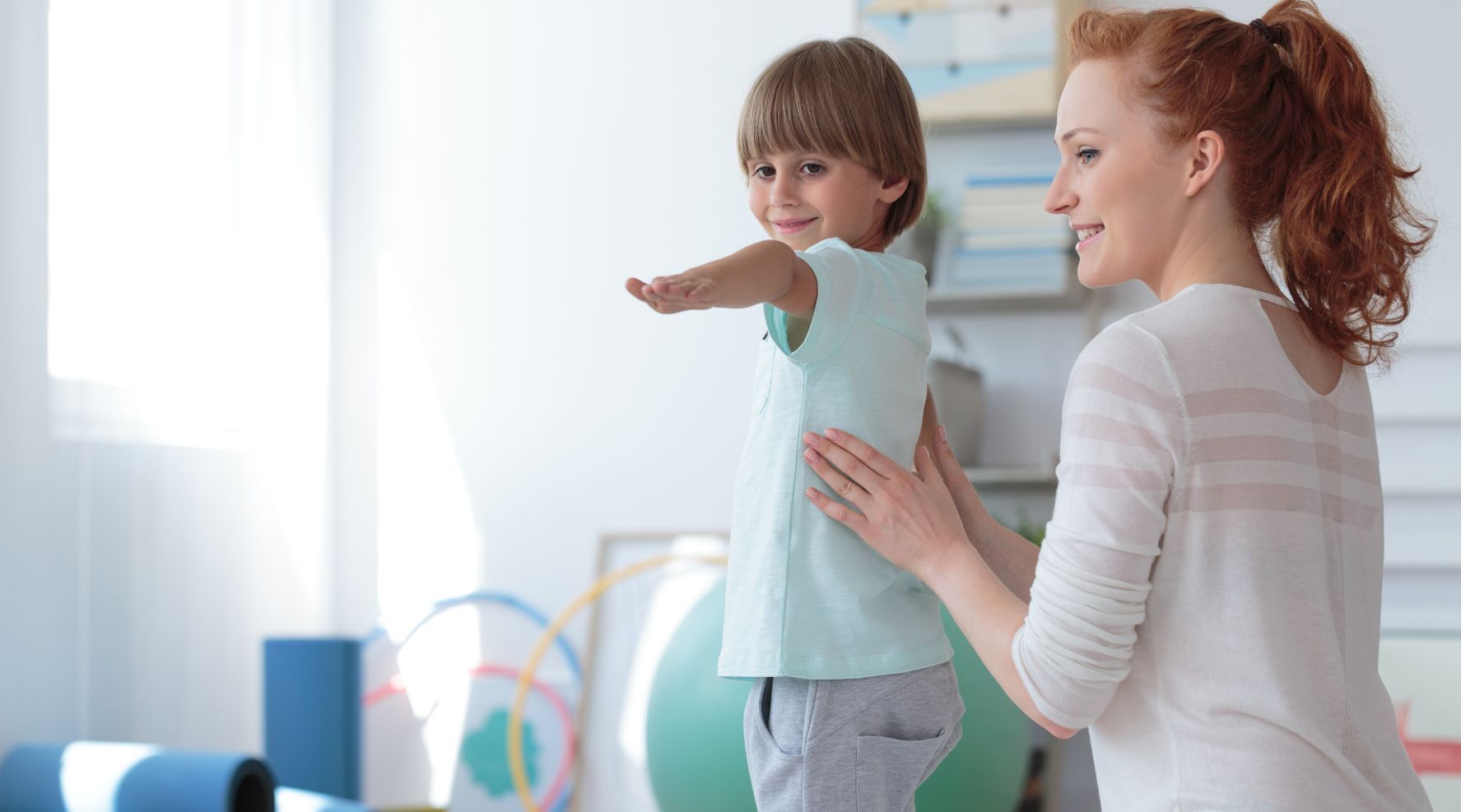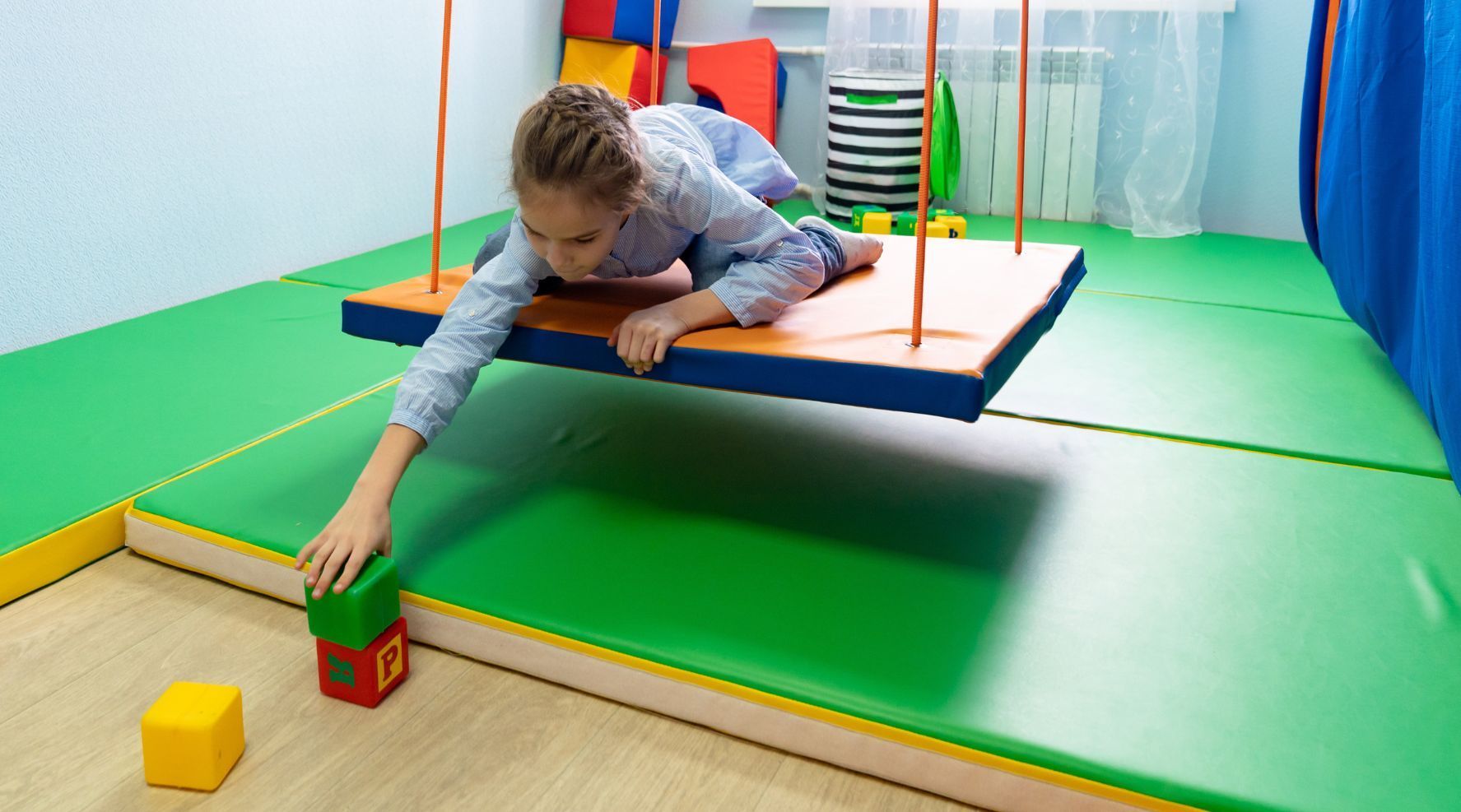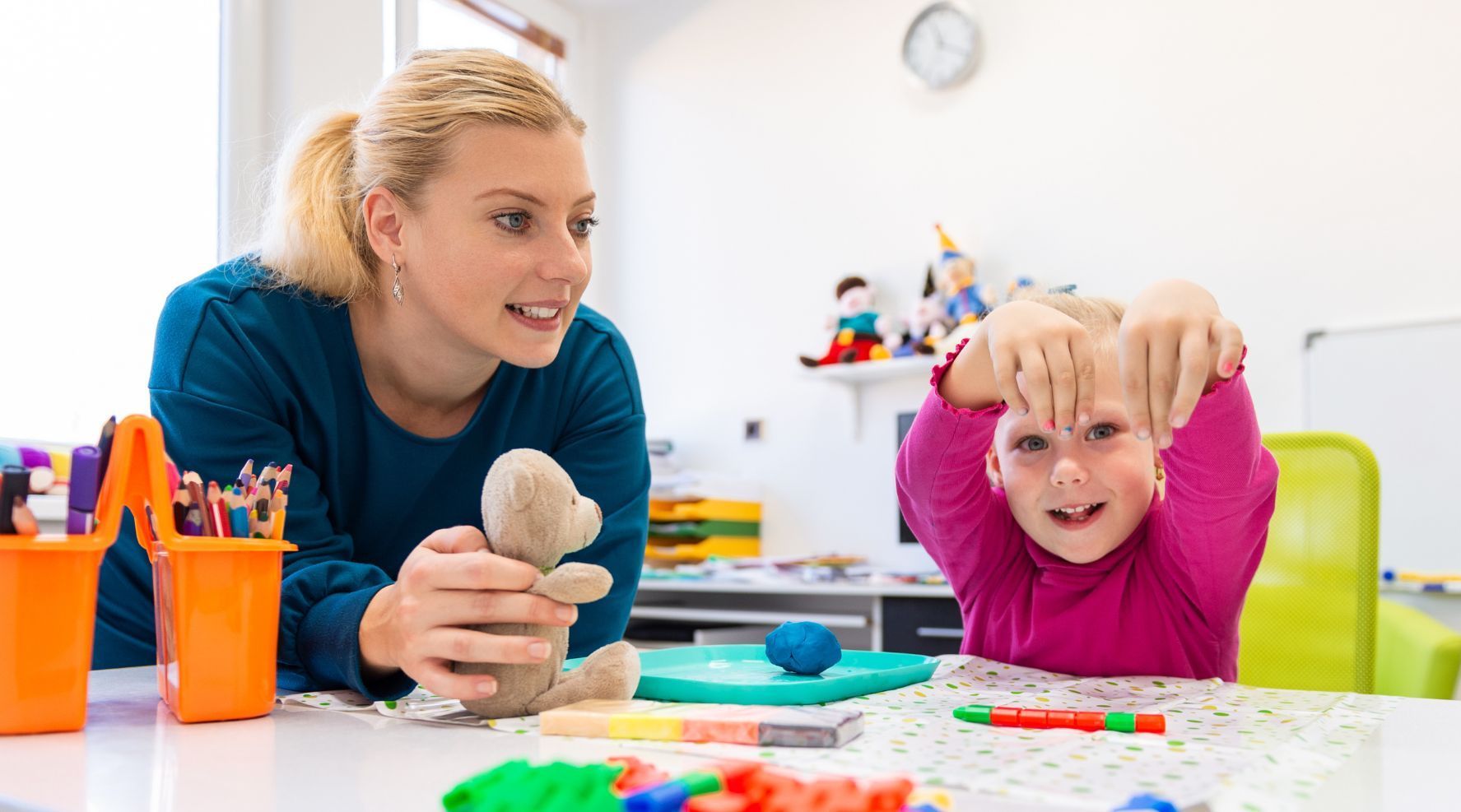What Are Common Sensory Integration Activities?
When a therapeutic environment looks like a playground, kids with sensory issues may be more enthusiastic about doing the work necessary to help them. These common sensory integration activities are easy to recreate at home or out in the community.
Remember to introduce these activities gently, and never push a child beyond their tolerance levels. It takes time to allow the brain to develop a better ability to process sensory information. Let your child be your guide about their comfort level and their timeline.
Swings
A staple of sensory gym equipment, swings develop the vestibular (balance) sense. If you have the space, set up a backyard swing set or hang a swing securely from the ceiling in your child’s bedroom. Swinging helps children receive and react to sensory information about where their body is relative to the ground.
Play Clay, Sandboxes, Water Play
Kids with strong tactile sensitivities need the opportunity to experience different tactile sensations in a gentle, gradual way. Kneading, pounding, and squishing play clay, allowing sand to run through their fingers, or splashing water at bath time can help kids with tactile challenges. They learn to process tactile information and reduce their anxiety when encountering new tactile sensations.
Rocking Horse or Chair
Like swings, rocking horses or chairs are an essential bit of equipment for home sensory integration activities. Kids who find rocking motions calming can spend hours happily rocking or riding. However, be conscious of overstimulation, and regulate the amount of time your child may spend in these activities, especially if they are sensory seeking. Your child may rock vigorously, potentially damaging furniture or even falling off their horse or out of their chair.
Climbing and Monkey Bars
Many public parks now include kid-sized climbing walls. Most have monkey bars and others have mini-zip lines. All these options offer the opportunity to build both the vestibular (balance) sense and the proprioceptive sense (awareness of body position.) Using this equipment requires kids to use hand-over-hand or cross-body motion (crossing the midline). This equipment helps improve core strength and develop bi-lateral integration, or the ability to coordinate both sides of the body at once.
Heavy Work
Sensory-seeking kids always seem on the go, literally bouncing off the walls! They aren’t getting sufficient information from their bodies relative to their surroundings, so they seek extreme stimulation to get in touch with their muscles and joints—developing their proprioceptive sense.
Pushing, pulling, and carrying heavier objects can help these kids settle down. Games that involve tossing heavy bean bag toys, carrying books or grocery bags, or pushing and pulling carts or wagons can help children with proprioceptive problems. These common sensory integration activities help kids learn to recognize where parts of their bodies are relative to other body parts and their surroundings.





